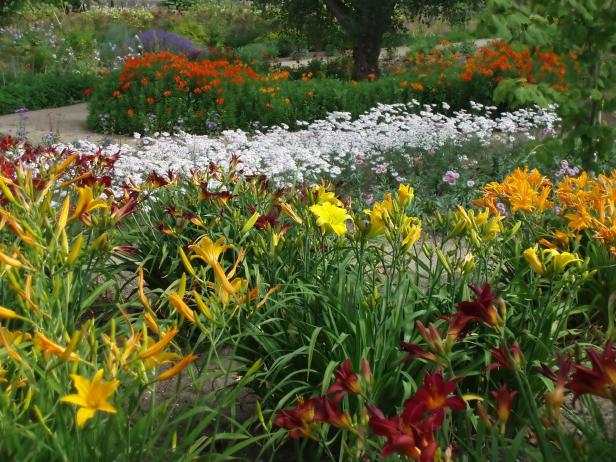The outside of a home is as important when you decide to sell one as the inside, states Lauren Green from the realtor times. That is the first impression and the prospected buyer gets their first impression. Flower beds, nice landscaping, and gardens are very pleasing to people and help sell a home by as much as 17% when the outside is manicured and well cared for.
Perennials come back to your garden year after year, bringing reliable color and form to your landscape. Here are some basic tips for laying out a perennial garden you’ll love for years to come.
Make a plan. Before you buy a single plant, put your ideas on paper (or in garden-planning software). Measure your plot. Draw in permanent structures like fences, porches or pools. Draw in plants at their mature size. Look at how it fits together – or doesn’t. Remember, don’t improvise your perennial garden. If you do, you’ll be correcting your mistakes with a shovel for years to come.

Match your garden style with your architectural style. Wavy-edged beds and an informal mix of perennial garden plants work best with a one-level cottage, a ranch house or a bungalow. A larger home or one with strong design elements (like a mid-century modern or Italianate style house) will need straighter lines and a more formal perennial garden design.
Watch the scale. Make sure your perennial garden is in proportion to your house or the structure that’s nearest to it. If your house is large, put in taller plants and wider beds. If your house is smaller, plant shorter plants in smaller beds.
Choose plants with an eye to bloom times. The best perennial gardens have a color for as much of the year as possible. Choose plants that bloom in spring, summer, and fall. Add some evergreens for winter color.
Think about color. There are no right and wrong colors in a garden. Plant what you find pleasing. Get a color wheel, a basic artist’s tool, to figure out what you like. Some color schemes to consider for perennial gardens: monochromatic, which combines shades of a single color (like pale pink to hot pink); analogous, which combines adjacent colors on the wheel (like red, yellow and orange) and complimentary, which combines colors opposite one another on the color wheel (like purple and yellow or red and green.)

Think about the future. Your plants will start small and get larger. Much larger, sometimes. When choosing plants, keep in mind their mature size and make sure your perennial garden design gives them the room they’ll need.
Height matters. Place plants in your garden just as you would people in a group photo: put the short garden perennials in the front and the tall ones in the back. Not sure how tall that little plant will be when it grows up? Check the tags to see what its mature size will be.

Put the right plant in the right place. Know the amount of light your garden will get each day and pick garden perennials accordingly. Put the sun-worshiping plants where they’ll get six to eight hours of sun a day, and put the shade-loving ones in a spot that gets less light. You’ll save yourself the expense and frustration of replacing those scorched hostas and black-eyed Susans that never bloom.

Comments(2)